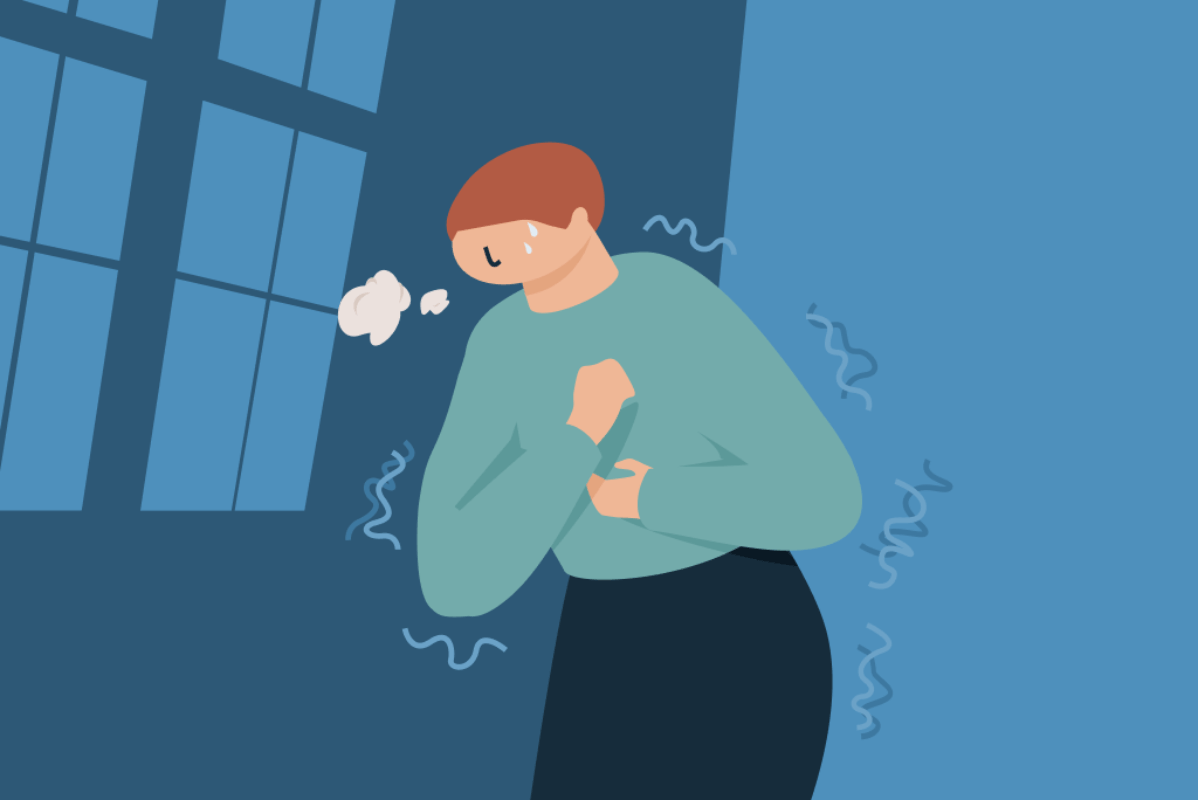Panic attack
A panic attack is defined as a brief or moderate period of overwhelming anxiety or fear. The intensity of panic attacks may vary and go beyond normal anxiety. Moreover, it can include a number of physical symptoms, most people during their panic attacks think that they are having a heart attack, breathing difficulties or they are dying.
Facts about panic attacks
- Panic attacks may feel and look scary and harsh, but they are not life-threatening.
- The attack is usually short but intense.
- Symptoms typically peak within 10 to 30 minutes. However, sometimes I last for an hour.
- Panic attacks occur randomly or are linked to a specific reason.
What does a panic attack look like?
- Dizziness
- Nausea
- Tingling, and shaky hands
- Anxiety
- Shortness of breath
- Chest pain, increase in heart rate, and feeling that you have a heart attack
- The desire to isolate yourself
- Extreme fatigue and Fear
- Sweating, and sweaty palms
- Irrational thinking and feeling that something very bad will happen
- Hot or cold flashes
In all cases and in all attack instances of panic attacks, a person can’t explain how he is feeling.
5 practical Ways to stop your panic attack
1- Get some fresh air
When we experience panic, our surroundings may seem smaller and we may breathe more quickly, which may cause us to hyperventilate.
Try to get some fresh air as soon as you start to feel anxious. This could involve getting out of the building you’re in, sticking your head out a window (it may seem strange, but it works for me frequently), or even opening a door or window and sitting down next to it.
2- Focus on your breath
I understand how difficult it can be to control, but if you can, try to control your breath even a little bit. This will slow down your heartbeat and make you feel less worried.
In the midst of a panic attack, it can be difficult to recall specific breathing techniques, so just take a big, calm belly breath before exhaling through your mouth.
The length of the inhalation and exhale should be the same length, which is my main goal. Do this while counting from 1 to 4.
3- Stay aware
A panic attack can leave us with the overwhelming sensation that we are not secure where we are, and we may even start to feel as though we are outside of our bodies.
So, try to reacquaint yourself with your surroundings by expressing what you observe there.
Speaking aloud about your feelings and the reasons you believe this is happening can also be beneficial.
Saying what comes to mind can assist bring some clarity to why you are now experiencing the situation the way you are because there are probably a million thoughts racing through your head.
4- Meditation
this is depending on your location:
A brief meditation might help you calm your mind and organize your thoughts. Some meditation app which is created for panic moments and leads you through a calming body scan is a fantastic brief meditation to try.
The meditations can last three, five, or ten minutes, depending on how much time you have available.
The best yoga position for anxiety is to lean your legs up against a wall. Sit as near to a wall as you can while facing sideways, then turn your body around and allow your legs to lean up against the wall while you lie back. This position encourages the flow of blood back to the heart, relieving the strain on the organ and calming the pounding heartbeat. Close your eyes and stay there for ten minutes before letting go.
5- Have a worm drink
Our muscles start to significantly tighten up when we are experiencing worry or panic. You might feel this in your chest especially, and I find that sipping on a pleasant warm herbal beverage will help to relieve the tightness, improve breathing, and offer some comfort.
Ice cube trick, does it work?
A “grounding exercise” is when someone makes touch with ice during a panic attack. Something that “alters your sensations” and “brings a fresh sense of mindfulness” is a grounding practice. In other words, Exposure to cold water slows the heart rate, which reduces anxiety by calming the body.
so you have more than one option, first, hold an ice cube, second, put something cold or frozen on your wrist, or you can take a cold shower.
Is using ice cubes for mental health as effective as using other methods?
“Mindfulness-based cognitive behavioral therapy is a more comprehensive treatment approach, and the ice method is just one little instrument inside it. It is not a treatment in and of itself.
Although using ice during a panic attack might be a useful coping technique, it is not the only way to alleviate severe and repetitive anxiety and panic attacks. This is the time when both counseling and medicine may be especially helpful.
Resources and references: MayoClinic, NHS, healthline, Better Health Channel, American Psychiatric Association.


Leave a Reply